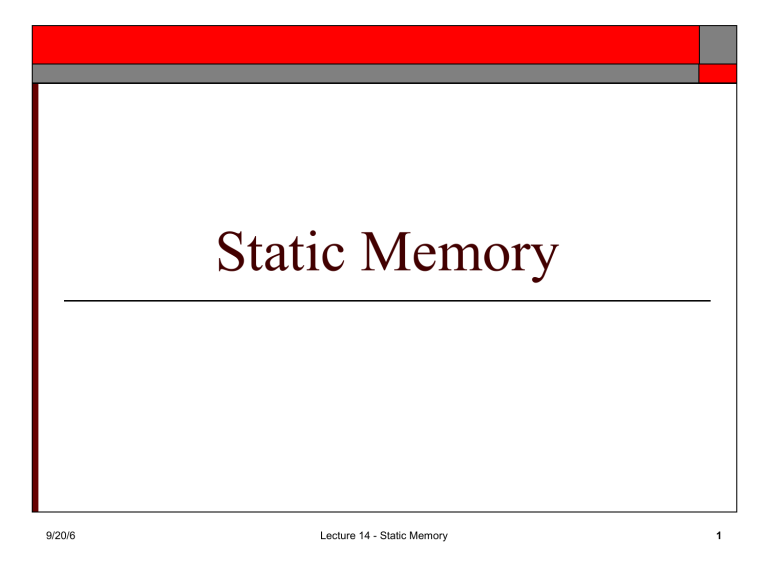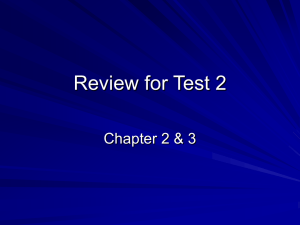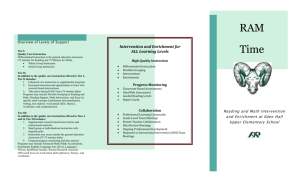Static Memory - Electrical and Computer Engineering

Static Memory
9/20/6 Lecture 14 - Static Memory 1
Static Memory
9/20/6 Lecture 14 - Static Memory 2
Static Memory Systems
Those semiconductor components in a microcomputer that store the program and data.
Role in the system can be seen as passive – memory simply stores to information and except for specialized architectures, performs no operation on the data stored there.
Today it is common to have yyG bytes in a system.
9/20/6 Lecture 14 - Static Memory 3
Static RAM Characteristics
Forms the bulk of memory in a system.
Is read/write memory.
For read/write memory have choice of
Static RAM
Dynamic RAM
Special Characteristic Memory
ROM (PROM, EPROM, EEPROM)
EEPROM partially used as RAM
Computational Memory
9/20/6 Lecture 14 - Static Memory 4
Static RAM
Nonvolatile – as long as power is on value is retained with no other action.
NMOS Memory cell
CMOS Memory cell
Select
Select
Vcc
Vcc
GND
GND
9/20/6
Data
Data*
Data
Lecture 14 - Static Memory
Data*
5
Gate Equivalent
CMOS Memory cell
Vcc
Select
9/20/6
Data
GND
Lecture 14 - Static Memory
Data*
6
1 st approach to 16K of RAM
9/20/6 Lecture 14 - Static Memory 7
2 nd approach to 16K of RAM
9/20/6 Lecture 14 - Static Memory 8
Internals of 6264LP Static CMOS
RAM
9/20/6 Lecture 14 - Static Memory 9
A RAM Chip
6264LP-10
-10 means
100ns access time
Consider all parameters
9/20/6 Lecture 14 - Static Memory 10
Bus Contention
Read after read to same chip
Must consider what happens in preceding cycle and what happens in next cycle
Must also consider read after write, write after read, and write after write timing
Timing for the same chip and for different chips
9/20/6 Lecture 14 - Static Memory 11
Read cycle bus contention
9/20/6 Lecture 14 - Static Memory 12
Write cycle bus contention
9/20/6 Lecture 14 - Static Memory 13
PROM and EPROM
Programmable Read Only Memory
One time programmable
Electrically Programmable Read Only
Memory
Programmed by provided a higher than normal programming voltage – 12V to 25V
UV erasable
Used to program and code startup code – the bios in a PC
9/20/6 Lecture 14 - Static Memory 14
PROM and EPROMS
Come in many sizes
Byte wide is very common
Wordwide is also common
9/20/6 Lecture 14 - Static Memory 15
EEPROM
Another form of non-volatile memory
Read cycle is like other PROMs
Write cycle timing is long – typically over
100 us.
9/20/6 Lecture 14 - Static Memory 16
EEPROMs and flash EEPROMs
Flash EEPROMs are similar to electrical erasable PROMs
9/20/6 Lecture 14 - Static Memory 17
Example of flash EEPROM use
Flash
EEPROMs are similar to electrically erasable
PROMs
9/20/6 Lecture 14 - Static Memory 18











